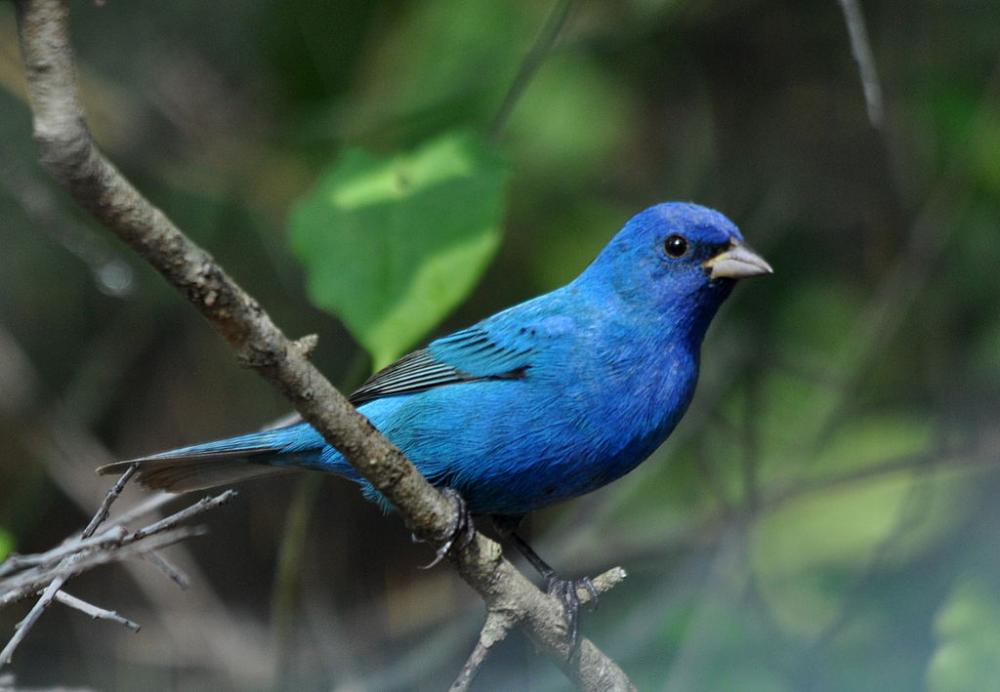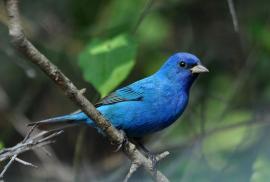Guide to Boreal Birds
Overview
Indigo Buntings have no blue pigment; they are actually black, but the diffraction of light through the structure of the feathers makes them appear blue. These attractive birds are also found in rural roadside thickets and along the right-of-way of railroads, where woodlands meet open areas. They are beneficial to farmers and fruit growers, consuming many insect pests and weed seeds.
Description
5 1/2" (14 cm). Sparrow-sized. In bright sunlight male brilliant turquoise blue, otherwise looks black; wings and tail darker. Female drab brown, paler beneath.
Voice
Rapid, excited warble, each note or phrase given twice.
Nesting
3 or 4 pale blue eggs in a compact woven cup of leaves and grass placed in a sapling or bush in relatively thick vegetation and within a few feet of the ground.
Habitat
Brushy slopes, abandoned farmland, old pastures and fields grown to scrub, woodland clearings, and forest edges adjacent to fields.
Range/Migration
During winter, Indigo Buntings may be found over a large area from central Mexico to northern South America, but they are most common from eastern coastal Mexico through Costa Rica. Spring migration occurs along a broad front and includes movement around and across the Gulf of Mexico. The population that breeds in Arizona and New Mexico does not take the shortest route from Mexico; these birds fly across Texas before turning to the southwest.
Much of what we know about the mechanisms of orientation and navigation in migratory birds was discovered in experiments involving Indigo Buntings. Using captive birds in a planetarium, John and Steven Emeling manipulated the appearance of the stars to prove that these birds (and apparently many others) orient by tracking the movement of stars surrounding the North Star, rather than by tracking the North Star alone.
Breeds from southeastern Saskatchewan east to New Brunswick, and south to central Arizona, central Texas, Gulf Coast, and northern Florida. Winters in southern Florida and in tropics.



